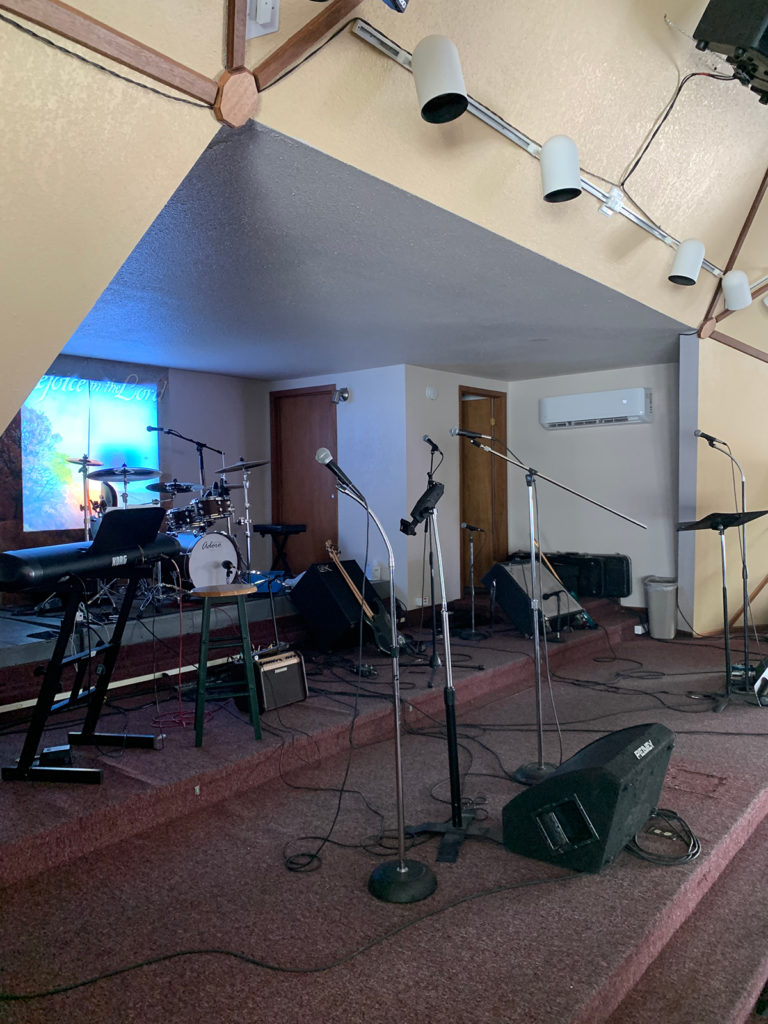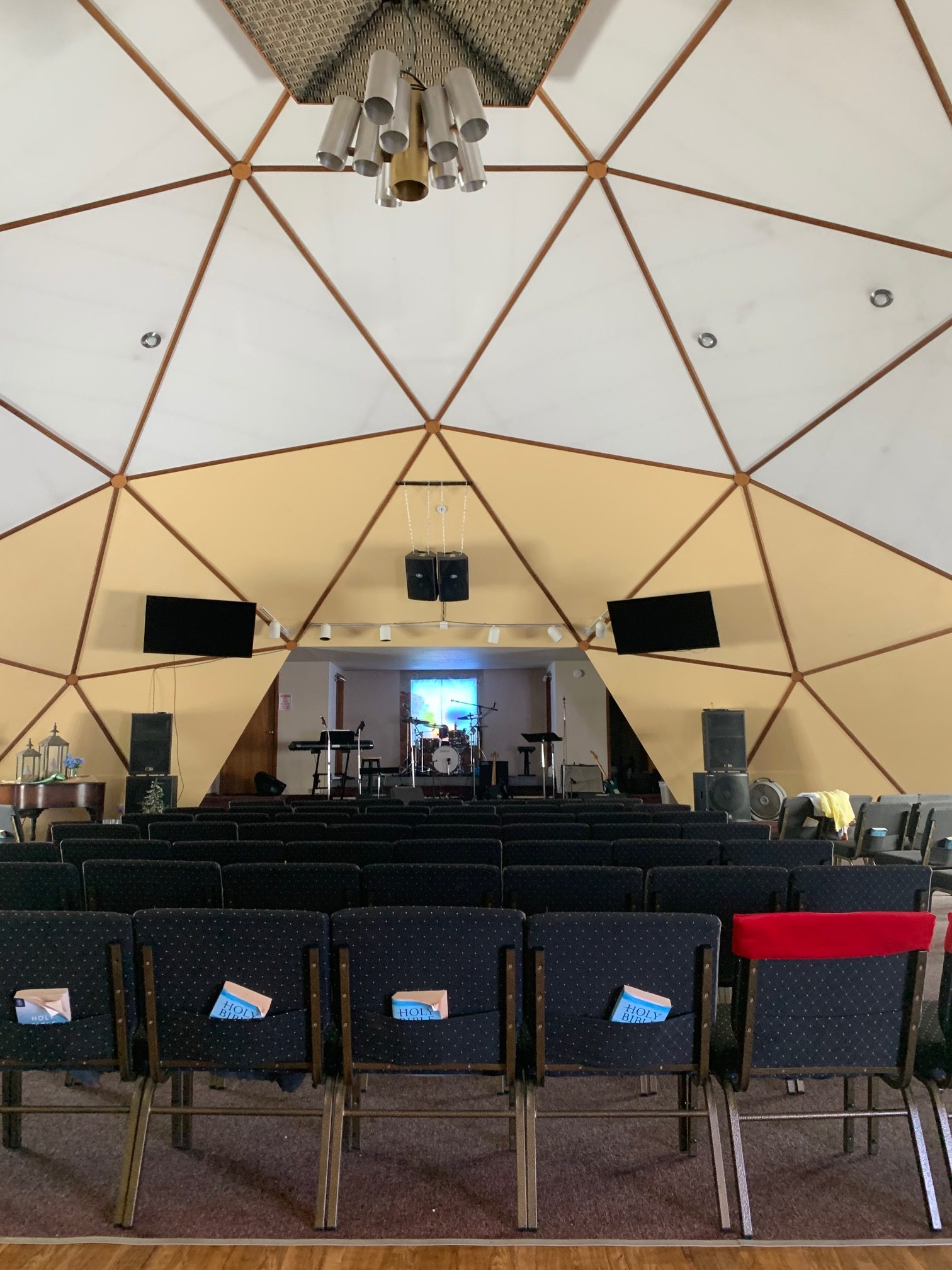At Acoustic Fields, our room forms are designed to help us help you with the acoustics of your room. The room form asks for your room dimensions along with the usage of the room and numerous other variables. The room form is designed to give us a look at what is going on within the room or usage. It also allows us to see the spaces within the room that are available for treatment. The room form will allow you to attach up to four pictures. Stand in the center of the room and take a pic of all four walls. Try to get one view of the ceiling within one of the four pictures that are allowed to be attached to the room form. Remember that a picture is worth a thousand words so make sure you attach those pics before our call together. With the pictures attached to your foams it will go along way for me to help you with your acoustical issues. Read what we are all about at: https://www.acousticfields.com/about/
In the two pictures below we see a conference room set up in a homeowners association. They have regular meetings in this room and sometimes residents use the facility for parties and gatherings. The client is complaining that they “can not hear themselves think”. This issue is produced by the reflections from the hard surfaces within the room. Each wall surface area within the room takes on the properties of a speaker. Sound energy from voice strikes the walls, floor, and ceiling and is reflected back to the source of the sound which is another person. Sound stays around long after it has been spoken. I guess it wants to join the party but it is an unwelcome guest. This room distortion is termed reverberation. https://www.dictionary.com/browse/reverberation and has an impact on speech intelligibility which is how many words in each spoken sentence we can actually hear.
Let’s take a look at the room and what it is doing to contribute to these issues.
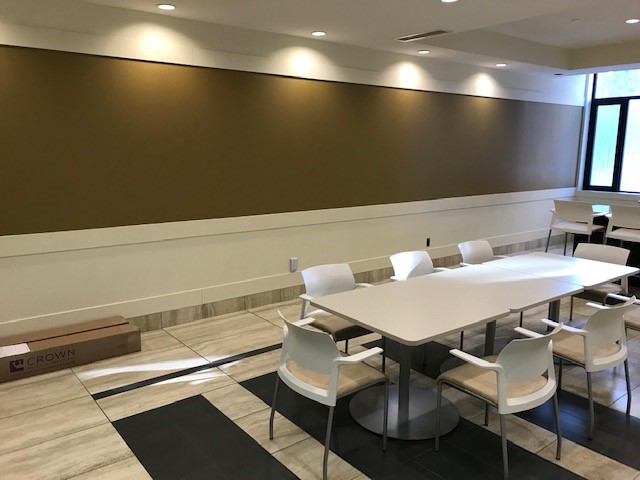
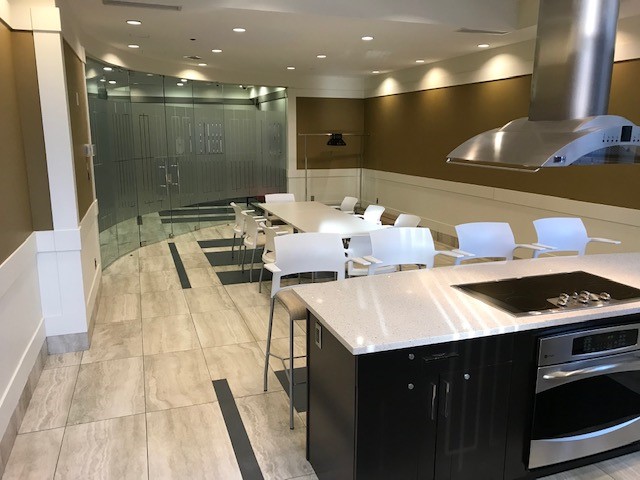
What is the first thing we notice in this room? We notice all the hard surfaces within the room. We have glass doors, hard surface countertops, tables that reflect sound and numerous windows. If someone came to us and said design a room in which no one can hear the other speak, I would use these material types. Sound takes on the characteristics of the surface areas that it strikes. if you have glass and hard surfaces throughout the room, you will get high reverberation times along with a lack of speech intelligibility. Hard surfaces increase reverberation times and the higher the reberation times the lower the speech intelligibility index will be. The reverberation times in this room are well over 4 seconds. The goal will be to get them down into the 1 – 1.5 second range where we can achieve a 80% speech intelligibility rate. With this reverb time, one can hear each other speak and thus communication. Another issue we have with people who are over 50 years old is that they are more susceptible to higher reverberation times. Due to hearing loss over time, high reverberation times can have a greater negative impact on speech intelligibility.
Treatment involves using the proper rates and levels of absorption for voice. Not all sound absorption technology is designed for music and voice. Most sound absorption technologies are designed for noise which means they try and absorb as much energy as they can for every square foot of surface area material used. Care must be taken to use a material type that has the proper rate and level of absorption for voice. Our Studio Pro Foam is used throughout the world in critical audio environments. It took me 8 years and 2 M to create. It has the proper rates and levels of absorption for voice to increase speech intelligibility. Most foams in the marketplace absorb too much middle range energy and produce a sound within the room that is too dead or lifeless. There must be a balance between reflected and direct energy within our rooms where we communicate through speech within. Direct energy is the straight line energy that comes from our mouths when we speak directly into our ears. Reflected energy comes from the walls, floor and ceiling within our rooms. To achieve speech intelligibility, we must have a balance of both of the direct and reflected energy.
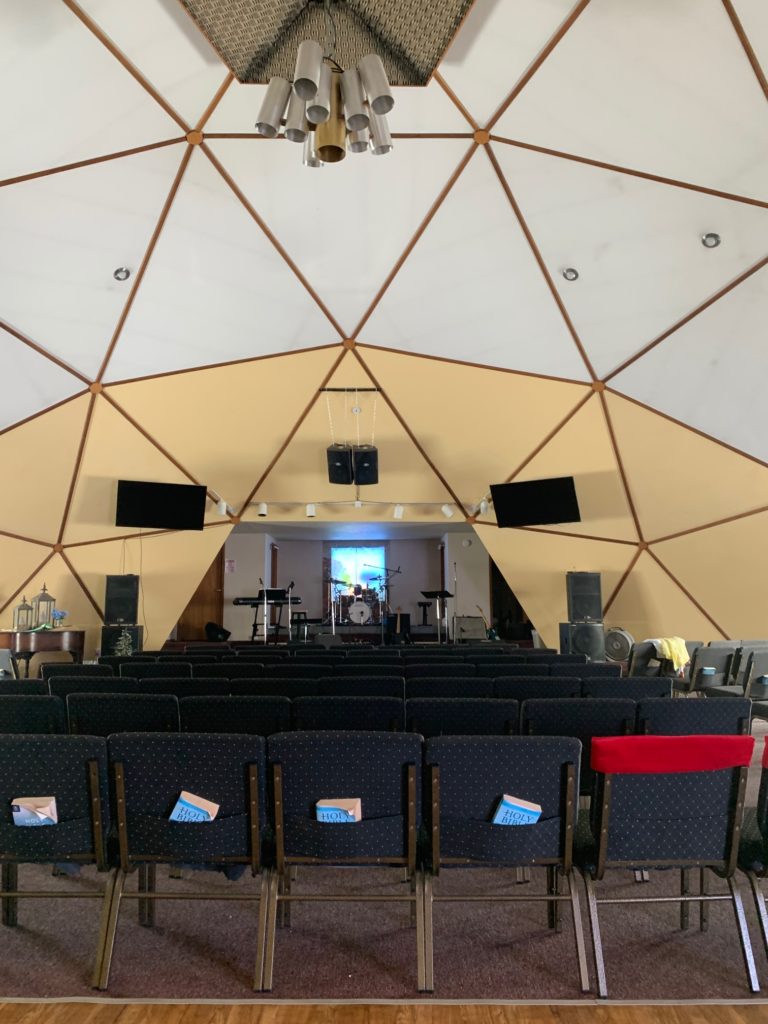
Churches are notorious for high reverberation times. Large room volumes and hard surfaces within the walls of the church all contribute to numerous reflections that interfere with the wanted direct energy from our sources In our churches we must have two indexes to work with. We have speech intelligibility and music intelligibility. We have the spoken word and the musical word. The musical word supports the spoken word. In this church we have another issue that is compounding the issues. We have a domed ceiling. A domed ceiling focuses energy instead of spreading it out. The dome focuses the reflected energy down onto the congregation. This creates a beaming effect that is not wanted. We want our sound to be natural and not focused. The best room is no room at all. With a domed ceiling we are creating more reflections that are then focused back into the audience. Treatment for these issues will be sound absorption technology placed within the dome itself to minimize the reflected energy and the beaming effect of the dome structure.
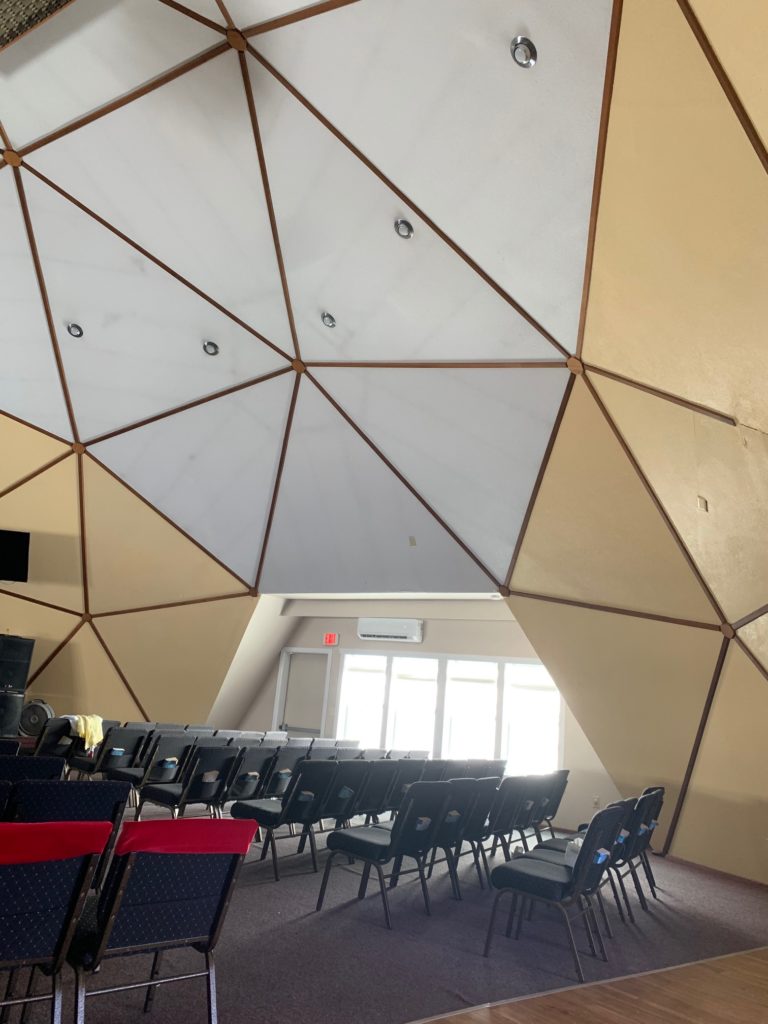
Notice that at the base of the dome there are small alcoves or rooms where bands are set up to play. These small rooms produce their own sets of issues. These rooms will resonant or produce distortion based upon their room dimensions. Placing a band within these small rooms will excite all of the room modes within the rooms. This unwanted room pressure is room distortion. One impact of this room distortion is commonly referred to as “room boom”. This is where low-frequency pressure will not fit within the room. When it does not fit, it excites the air within the room and this air excitation is what produces a room boom. We have all heard this effect. It is a low-frequency issue that blurs and smears the middle and high frequencies of our instruments and voice. All of this distortion then enters the church and then is mixed with the other distorted energy within the church.
